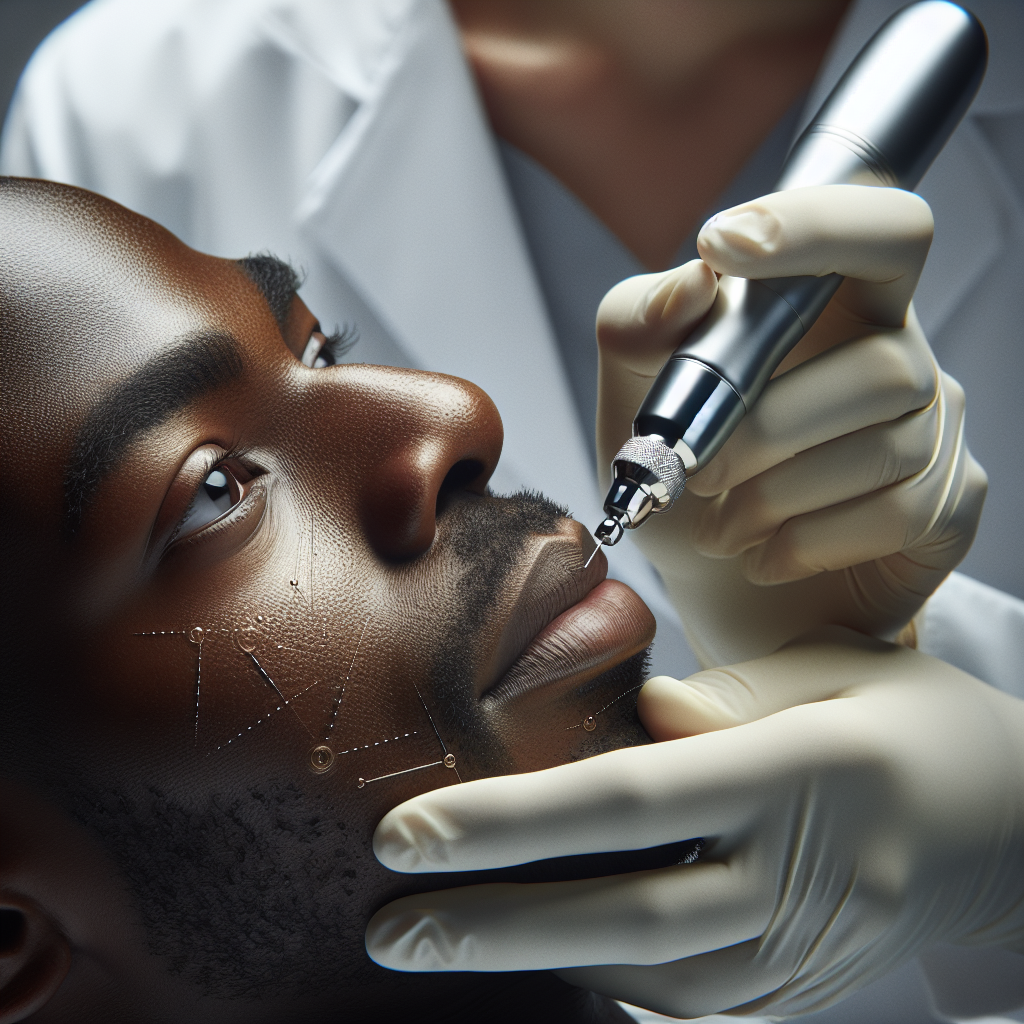Microneedling has gained popularity for its ability to rejuvenate the skin, improve texture, and address imperfections like acne scars. While professional microneedling treatments can be conducted by a dermatologist, many people are trying microneedling at home to save on costs. But is this practice safe, or are there risks involved? Let’s explore the aspects of microneedling, particularly focusing on at-home microneedling, so you can make an informed decision about your skincare routine.
Contents
- 1 1. What is Microneedling?
- 2 2. At-Home Microneedling Devices
- 3 3. Risks of At-Home Microneedling
- 4 4. The Benefits of Professional Microneedling
- 5 5. Proper At-Home Microneedling Techniques
- 6 6. Are There Alternatives?
- 7 7. Consultation with a Dermatologist
- 8 8. User Reviews and Community Feedback
- 9 9. The Importance of Understanding Your Skin
- 10 10. Conclusion: Weighing the Pros and Cons
- 11 FAQs
1. What is Microneedling?
Microneedling, also known as collagen induction therapy, involves the use of tiny needles to create micro-injuries in the skin. These small injuries stimulate the body’s healing processes, specifically collagen and elastin production. This, in turn, can enhance skin texture, minimize fine lines, and reduce scarring. The concept sounds promising, but it’s crucial to understand how at-home microneedling kits compare to professional treatments.
2. At-Home Microneedling Devices
When it comes to performing microneedling at home, most people use either dermarollers or microneedling pens. Dermarollers are handheld tools with small needles attached to a wheel. They are rolled across the skin to achieve the desired effect. Microneedling pens, on the other hand, are electric devices that use a stamping motion. Both can be purchased for at-home use, but they differ significantly from the equipment used by professionals in terms of needle depth and design.
3. Risks of At-Home Microneedling
There are certain risks involved when performing microneedling at home. A primary concern is the risk of infection. Home environments may not be as sterile as clinical settings, increasing the chance of bacteria entering the skin. Moreover, improper technique can lead to skin damage or exacerbate existing skin conditions. Using devices with excessively long needles can cause injury instead of the desired skin improvement.
3.1. Incorrect Needle Size
At-home dermarollers typically come with needles that are less than 0.5 mm in length, which is suitable for superficial skin treatments. However, some might be tempted to use longer needles for more dramatic results, not realizing that this should be handled by professionals who can manage the risks associated with deeper skin penetration.
4. The Benefits of Professional Microneedling
Professional microneedling treatments typically offer more significant results because dermatologists use equipment with deeper needle penetration, allowing them to treat more profound skin issues. They also provide a controlled environment that minimizes the risks of infection and skin damage. Additionally, professionals determine the correct treatment based on your skin type and conditions, ensuring a customized approach.
5. Proper At-Home Microneedling Techniques
If you decide to try microneedling at home, it’s vital to follow proper techniques and guidelines to minimize risks. Begin with a clean face and always disinfect your device with alcohol before and after use. Apply gentle pressure and avoid areas with active acne or open wounds. Post-treatment, use a serum that’s rich in nutrients to promote skin healing, and ensure you’re protecting your skin from the sun.
5.1. Post-Treatment Care
After microneedling, your skin will be more sensitive. Refraining from using harsh skincare products for a few days is advisable. Opt for gentle, hydrating products and prioritize a good sunscreen to protect your skin. Understanding the microneedling healing stages is crucial in providing the right aftercare for your skin.
6. Are There Alternatives?
For those apprehensive about microneedling at home, there are non-invasive alternatives such as retinoids, chemical peels, and laser treatments offered by dermatologists. Each comes with its benefits and drawbacks, so it’s essential to consult a professional to explore options that align with your skincare goals.
7. Consultation with a Dermatologist
If you’re considering microneedling, consulting with a dermatologist can provide clarity on whether at-home microneedling is right for you. They can help you understand the risks based on your skin type and recommend whether professional treatments might be a better choice.
8. User Reviews and Community Feedback
Before diving into at-home microneedling, consider reading reviews and community feedback. Online forums and beauty blogs offer personal experiences and tips, though it’s key to cross-reference these with medical advice. Users often share their journey, helping others avoid pitfalls they’ve encountered.
9. The Importance of Understanding Your Skin
Not every skin type responds well to microneedling, whether at home or in a professional setting. Sensitive skin, for instance, may not tolerate the procedure well. It’s crucial to understand your skin’s needs and limitations, emphasizing that what works for one person may not work for another.
10. Conclusion: Weighing the Pros and Cons
While microneedling at home offers a cost-effective solution to improve your skin, it’s essential to weigh the benefits against the risks. Proper technique, hygiene, and post-treatment care are non-negotiable for safety. Consulting with professionals, whether through initial advice or opting for professional treatments, helps in making informed decisions regarding your skincare journey.
FAQs
Is microneedling at home effective?
At-home microneedling can be effective for minor skin issues like fine lines or slight texture changes, but it generally offers less dramatic results compared to professional treatments.
What should I look for in a microneedling device?
Choose a device with sterilized needles and a design that’s easy to clean. For at-home use, needle lengths of 0.2 mm to 0.5 mm are considered safe.
How often should I do microneedling at home?
For most people, once every four to six weeks is sufficient. More frequent treatments can lead to irritation or potential damage.
The decision to engage in at-home microneedling should be made with care and consideration. Educating yourself and consulting with professionals are steps to ensure you achieve the desired outcome without compromising your skin’s health.
Sources:
– [AD]
– [NS]
– [Wikipedia]


